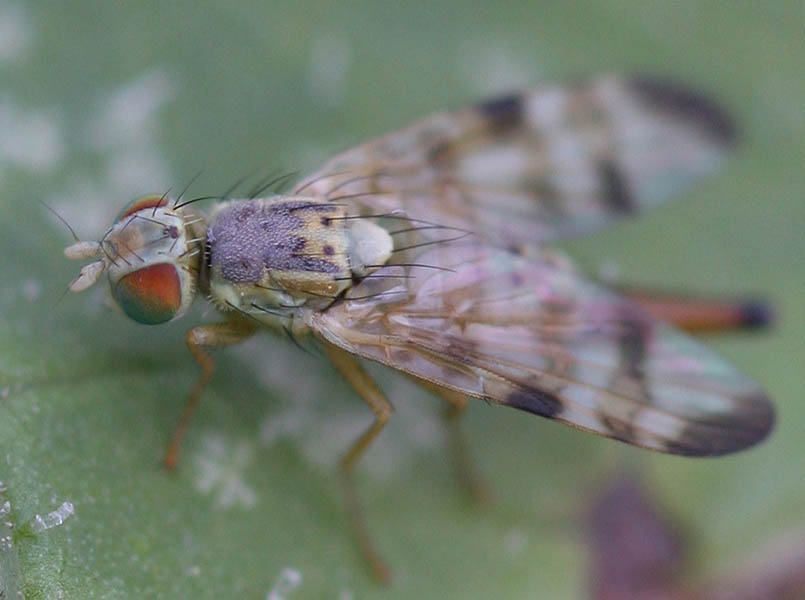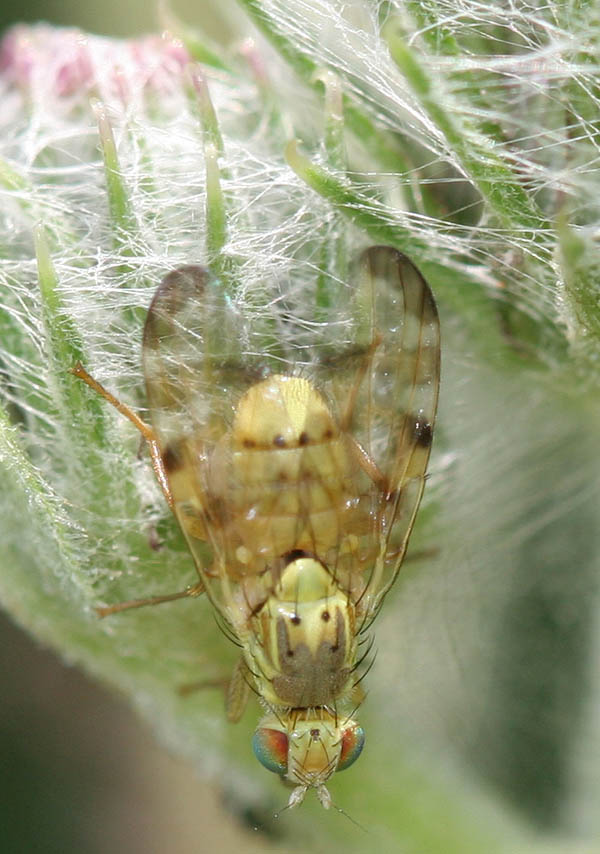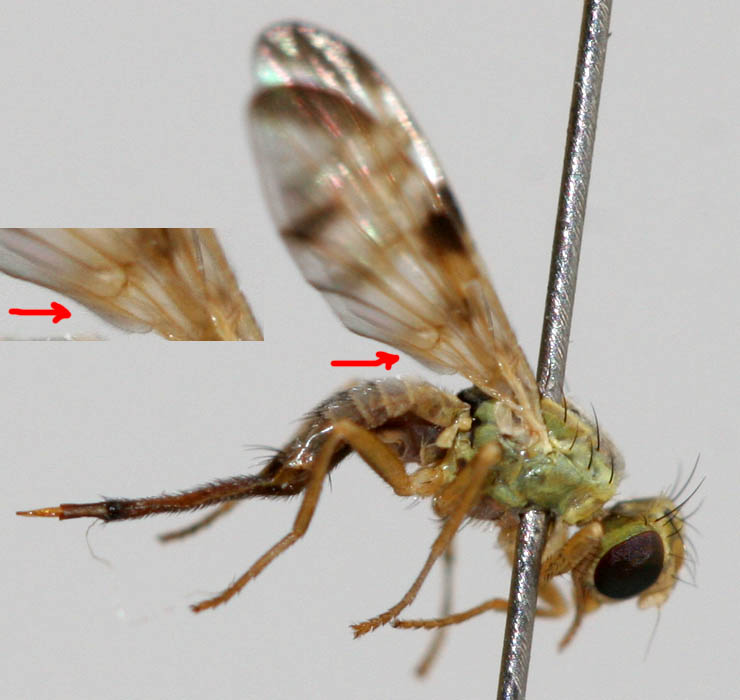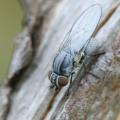Diptera.info :: Identification queries :: Diptera (adults)
Who is here? 1 guest(s)
|
Tephritid. Orellia distans?
|
|
| Nikita Vikhrev |
Posted on 14-07-2006 17:13
|
|
Member Location: Moscow, Russia Posts: 9410 Joined: 24.05.05 |
Moscow region, 14 july, 5mm, on Arctolis grandis.
Nikita Vikhrev attached the following image:  [50.84Kb] Nikita Vikhrev - Zool Museum of Moscow University |
|
|
|
| Nikita Vikhrev |
Posted on 14-07-2006 17:19
|
|
Member Location: Moscow, Russia Posts: 9410 Joined: 24.05.05 |
And as far as I understant it is male of same species?
Nikita Vikhrev attached the following image:  [86.83Kb] Nikita Vikhrev - Zool Museum of Moscow University |
|
|
|
| John Smit |
Posted on 17-07-2006 15:18
|
|
Member Location: Utrecht Posts: 565 Joined: 05.10.04 |
Hi Nikita, I'ld put my money on Terellia (Cerajocera) tussilaginis. Best wishes, John |
| Nikita Vikhrev |
Posted on 17-07-2006 17:06
|
|
Member Location: Moscow, Russia Posts: 9410 Joined: 24.05.05 |
Thank you John. Is my Tephritidae key uncorrect? In it couplet dividing Orellia distans and Terellia tussilaginis is: - an cell (=cup) with short tooth near A vein (not longer than bp cell (=bm)) - Orellia dicstans - an cell (=cup) with long tooth near A vein (longer than bp cell (=bm)) - lead via Terellia tussilaginis. I decided that tooth is short. Was I wrong? Nikita Nikita Vikhrev attached the following image:  [77.1Kb] Edited by Nikita Vikhrev on 17-07-2006 17:09 Nikita Vikhrev - Zool Museum of Moscow University |
|
|
|
| John Smit |
Posted on 18-07-2006 08:19
|
|
Member Location: Utrecht Posts: 565 Joined: 05.10.04 |
Hi Nikita, Nope your key is correct! But this is what I would call a long tooth on cell an. If you see the real O. distans, or a real Orellia, it is immidiately clear. There is however another difference between Orellia and Terellia, in Orellia there are two black spots at the sutur on the thorax, on which no(!) setae are implanted, whereas in Terellia there are no such spots at the suture. A quick and dirty character in the field is that T. tussilaginis is very light yellow in colour, whereas O. distans is more dark, orange brown with even some grey (on abdomen or thorax, I 'm not entirely suren which). Nevertheless it is very healthy and good to keep on being critical! Best wishes, John |
| Nikita Vikhrev |
Posted on 18-07-2006 12:07
|
|
Member Location: Moscow, Russia Posts: 9410 Joined: 24.05.05 |
Thank you John. I'm not critical, I'm simply trying to understand how to ID Tephritidae in case of your absence  Nikita Nikita Vikhrev - Zool Museum of Moscow University |
|
|
|
| John Smit |
Posted on 18-07-2006 13:29
|
|
Member Location: Utrecht Posts: 565 Joined: 05.10.04 |
That's what I mean with being critical! Isn't that the key to understanding! Cheers, John |
| Jump to Forum: |














